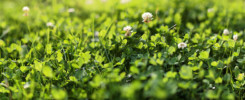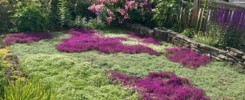How to turn your green space into a healthy avian habitat

Attribution: Trevor Clark
Autumn is a fascinating time for bird-watchers in our region. A wide variety of resident and over-wintering birds are regularly observed in Metro Vancouver throughout fall and winter. At places like Boundary Bay Regional Park and other seashore locations, immense numbers of waterfowl and shorebirds stop over on their way south. One thing is common to them all. They need food to survive the winter.
With just a few simple steps you can help all those species survive the winter, or fuel their journeys to warmer locales. Here’s how to make your yard or green space a welcoming place for our feathered friends.
Food
Birds may seem to love bread crusts and leftover buns, but these kinds of foods aren’t healthy for them. Instead, sunflower seeds, millet, Peanuts, niger seed, suet, and hulled sunflower seeds are examples of suitable choices with plenty of fat content to help them survive the cold of winter. It’s also important to keep the feeder clean to avoid the spread of diseases and make sure the feeder location is situated so that cats and other predators can’t make a meal of visiting birds. Hummingbird feeders with a sugar water solution are also a good idea over the winter, helping our local Anna’s hummingbirds weather the cold season.
Our natural environment shouldn’t be overlooked. Leave some seedheads and old berries on the plants in your yard and don’t be too tidy with that fall cleanup. A diverse garden habitat along with some leafy debris and plant material on the ground provides nourishment for insects, which in turn can feed birds. To help you find the right choices for your yard, the Grow Green Guide offers over 40 plants that support birds.
Shelter

A mix of shrubs, trees, and vegetation is best for providing habitat, but nest boxes are another solution. Be sure to space them at least 20 metres apart if you plan on having more than one and put them on isolated trees or poles, to reduce predation. Don’t forget to clean it after breeding season and before winter, when it may be used for shelter, to reduce the risk of diseases being transmitted. Snags (dead trees) and downed wood also provide food, nesting, and perching locations. Consider leaving them up if it’s safe to do so.
Water

Attribution: Trevor Clark
While there is generally plenty of water in Metro Vancouver during the fall and winter, a small dish of water near your bird feeder location is a good idea. Keep it fresh and refill regularly, especially once the temperature drops and liquid water is harder for wild animals to find. As with feeders, location is important. Make sure your water supply isn’t in a place where predators could make a meal of a thirsty bird.
A bird-friendly green space at your home is a great way to support wildlife that doesn’t take a lot of work. For even more tips and techniques to make your yard welcoming for winged creatures visit Grow Green’s resource page http://www.growgreenguide.ca/resources/gardening-tips and look for the ‘Creating Habitat for Birds and Pollinators’ section.
Useful Links
Metro Vancouver Fall Winter Activity Guide (birding activities from now till February)
Fatal Light Awareness Program (FLAP)
City of Vancouver – Bird Friendly Landscape Operation Guidelines
The Wildlife Value of a Messy Garden
Burke Mountain Naturalists – birding checklists and nest box guides



